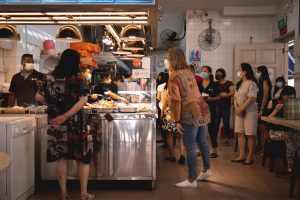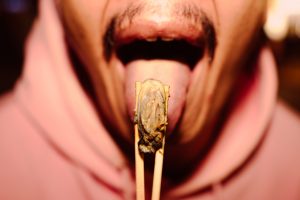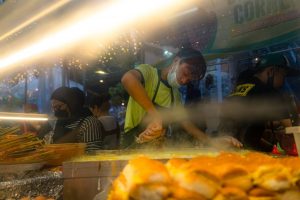In 2011, Singapore was bitten by the cafe bug—hard.
Seeking to replicate Melbourne’s cafe model here in Singapore, independently owned and operated cafes began sprouting up every other week. From the CBD to the heartlands, no neighbourhood went untouched.
With the arrival of cafes came changes in our everyday behaviours. A culture of cafe-hopping took off, as did brunch. Rather than hang out at malls, Singaporeans began heading to cafes, which in turn introduced them to third wave specialty coffee.
From the bean’s roasting to the barista’s skill, specialty coffee’s production methods are considered artisanal, sometimes even scientific. Often, bean origin is traceable, and the importance of sustainable sourcing is touted as one of the key differentiators from kopi.
Eventually, cafes and roasters like Nylon Coffee Roasters, Strangers’ Reunion, Dutch Colony, Pacamara, Group Therapy, Common Man Coffee Roasters and Chye Seng Huat Hardware set up shop and made a name for themselves.
Unfortunately, these cafes which have stood the test of time are the exception, not the norm. 6 years later, cafes in Singapore resemble stale bread more than they do Melbourne’s vibrant cafe culture.
Cafes continue to pop up, although at a much lower frequency than they did before. Save for a few, drinks and food menus pretty much resemble one another. And if you asked a random stranger on the street what the difference between a long black and kopi is, there’s a high chance they wouldn’t know the answer.
So the question is, what went wrong? How has so little changed with the coffee industry in recent years, and what can we realistically expect for the future?
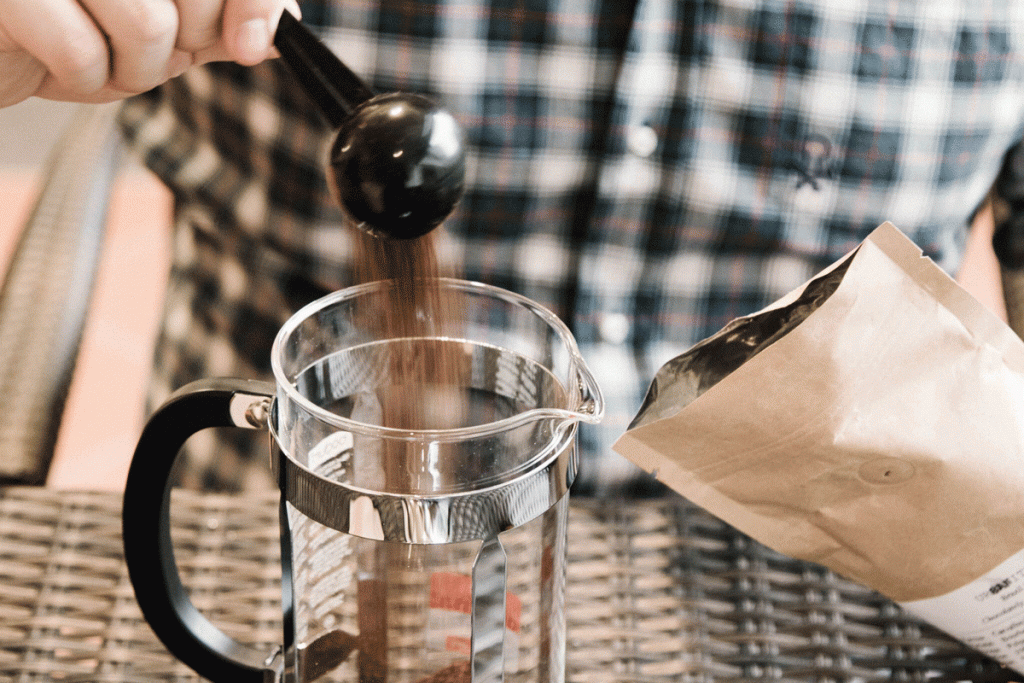
Some believe that the problem with Singapore’s cafe culture lies in a lack of vision and ambition.
Over the phone, Grant from Mercanta, one of Singapore’s leading green (unroasted) coffee bean suppliers, tells me that “the problem with many Singaporean cafe companies is that they start small, and stay small.”
Cafes in Singapore sometimes opt to roast their beans in-house and to do this, they have to buy a bean roaster.
“Start-up coffee roasting companies used to buy roasters with a capacity of 12 kgs per batch,” says Grant. “This was the standard first machine for a new company.”
However, in line with the needs of the market and the growing trend for in-store roasting, “Many new roasters now buy machines with a capacity of just 5 or 6 kilos, or even 1 or 2 kilos.”
This, according to Grant, may be limiting the ability of their business to grow in the short to medium term, especially if they have ambitions to go into wholesale.
Of the 20 over companies that Mercanta supplies beans to, only 5 or 6 of them are viable businesses like Two Degrees North or Dutch Colony, buying up to 600 kg of beans a month. The rest buy only a fifth of that amount.
“For cafes, much of their capital goes into getting a good espresso machine rather than a good sized roaster which can easily cost up to $60,000,” he adds.
Given that most cafe leases in Singapore expire within 2 to 3 years, the pressure is on for cafes to break even within a year, hence explaining why cafes tend to play it safe and avoid making large capital investments.
However, Grant believes that playing safe can also hamstring their growth. “Eventually, cafes find that they lack the capacity to gear up and expand further when needed.”
As for Will Leow, founder of Pacamara, Knockhouse Supply Co, and now the Alchemist, the problem with cafes boils down to a lack of focus.
“What is their USP (unique selling point)? For everything I do, I make sure I know my USP: comfort. Many people just start cafes and they’re known for nothing but convenience. People visit them because they just happen to be there.”
Perhaps this is why almost half of the 369 cafes and coffee houses that opened in 2011 have since closed.
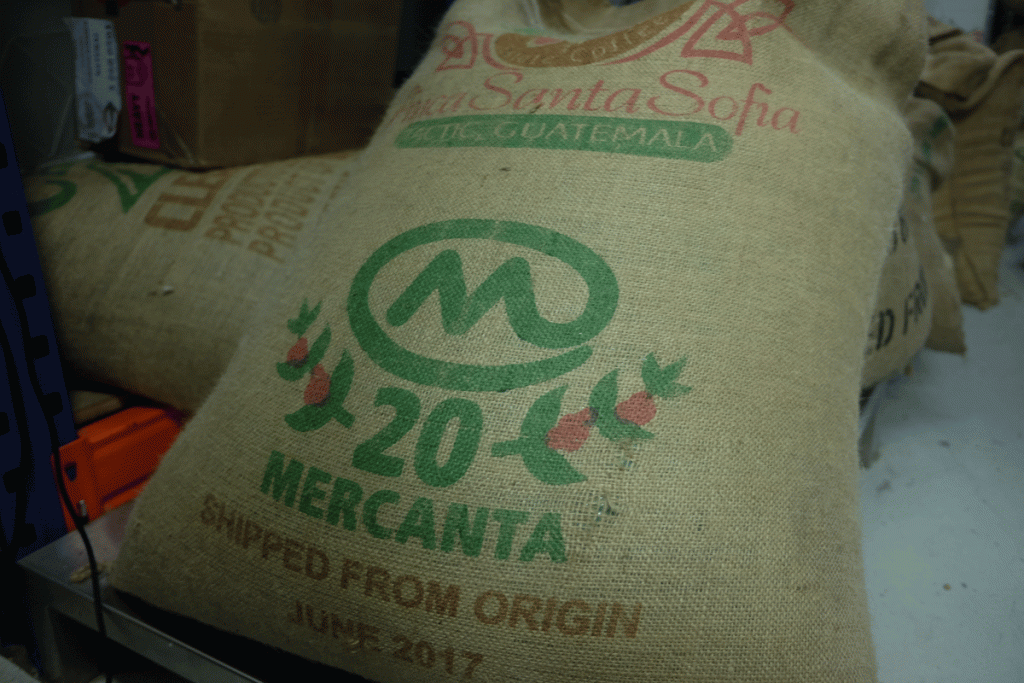
For a city that’s “pushing hard to be the centre of innovation”, there has also been a glaring absence of it in Singapore’s coffee and cafe industry. To call it creatively starved would be an understatement.
Adrian Khong, the founder of Jewel Coffee, shares that “between 2008 to 2012 and 2013, there was a lot more innovation.” Since then, “The rate that we’re seeing new things coming up for coffee has slowed down.”
“Maybe it’s become too much for the consumer to handle,” he guesses, though it’s not clear what he means by this.
Will has a more pessimistic take on the situation. Putting it bluntly, “There has been no innovation,” he says. “It’s the same everywhere. The layout in coffee stores is the same, even the machines used are also the same.”
To Will, most cafe owners aren’t in favour of taking risks and breaking the mould, and opt instead to follow a tried-and-true pattern by sticking to the knowledge of what works.

For the smaller players at least, it seems like the next 6 years might be just as uneventful as the last. But for the industry’s big boys, they’re moving quietly under the radar with plans to reach the masses and put Singapore on the map.
While a cafe culture may be prevalent here, many coffee players are still trying to tap into a larger, mainstream Singaporean population.
Adrian, whose Jewel Coffee has opened 11 franchise outlets across Singapore, tells me that they haven’t even reached the masses yet.
It’s for this reason that we hardly see third wave coffee players in shopping malls. “The mall owners don’t get it,” he tells me, “And if they don’t get it, they won’t allow us to expose our product to the masses.”
“In places like the CBD where people are more sophisticated, there’s a proliferation of specialty coffee stores, but how many CBDs do we have?”
One strategy which has been widely employed of late has been to tap into Nespresso’s coffee-pod market.
While Nespresso has long been seen as the antithesis to specialty coffee, a prime example of convenience trumping quality, specialty coffee players are gradually coming to accept that they can’t ignore its tremendous popularity.
Enabled by the gradual expiration of Nespresso’s patents beginning in 2011, companies like Perk, Hook and Providore Coffee have turned the competition on its head and come out with their own Nespresso-compatible range of pods for those who prefer instant, fuss-free coffee.
When I ask Paul Berthelsen, the founder of Perk Coffee, how sales have been for his coffee pods, he declines to reveal any numbers but does say one thing: “Good.”
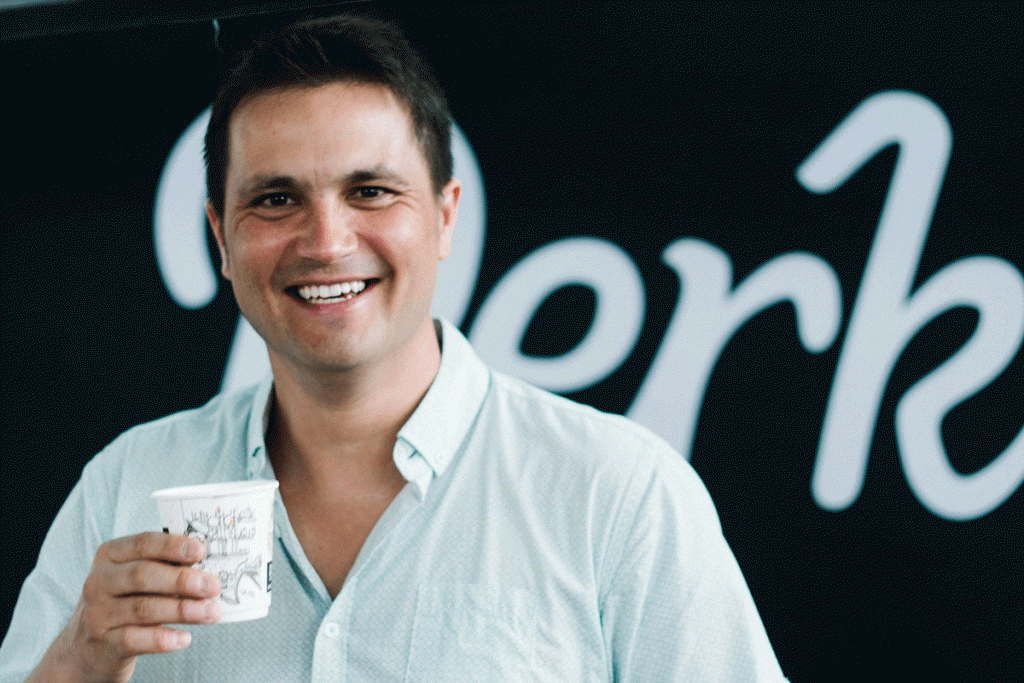
One reason underlying the push to become more mainstream is the fact that there are over 40 small-time coffee roasteries currently under utilised in Singapore. Kang Yi Yang, who co-runs 2 Degrees North Coffee Co, one of the larger specialty coffee roasters and wholesalers in Singapore, only roasts a few days a week.
At present, specialty coffee sees much less in demand than commercial coffee which still occupies the lion share.
Hence to save costs and utilise their equipment more economically, 2 Degrees shares roasting space with Santino Coffee Specialists (which is also owned and operated by his family). Unlike 2 Degrees North, Santino not only roasts specialty beans but also also supplies gourmet/commercial coffee to it’s customers.
To put things into perspective, Yi Yang operates a 1 kg and 12 kg roaster for 2 Degrees’ specialty coffee business while Santino operates a 60 kg roaster to service its commercial clients.
“We roast up to a few hundred kilograms of coffee beans a week. They roast easily over a few thousand,” he tells me.
It’s a shame, especially as Paul reports that Singapore’s coffee is well on par with that from Australia. Given that he’s an Aussie and a farm owner in Kenya where some of the best beans are grown, I’m inclined to believe him.
“We’re way better than Brisbane and Perth in terms of coffee.”
As for Melbourne, the coffee capital of the world, not so much, he says. But the potential is there. Already, we roast the exact same green beans as them, draw from the same suppliers, have the same roasting facilities, and use the same espresso machines.
The difference he says, boils down to barista skill. “Baristas, the final step in the product, are where Melbourne still has the edge,” he tells me.
As Pauline from Liberty Coffee confirms over email, “There is a well-documented shortfall of manpower in the F&B industry. Few baristas truly exhibit the depth of knowledge, the skill and the showmanship the profession demands.”

Fortunately, this is an issue that can be fixed.
In 2011, Pamela Chng founded Bettr Barista, an organisation specialising in coffee education, training, and international certification.
Since then, they’ve trained over 3000 students to be baristas, some of whom have even gone on to participate in world championships.
These competitions are a big deal, and involve entire teams of people including a coach, his/her assistants, a barista, a coffee bean roaster, and the coffee bean producer and farmer.
Just this year, former Bettr Barista student Natasha Shariff placed 4th in the World Coffee in Good Spirits Championship, accompanied by Jervis Tan of Kinsmen Coffee who placed 4th in the World Latte Art Championship.
“We’re starting to show that world that we’re taking this coffee business quite seriously,” says Pamela over the phone. “Not only that, we hope to lead the region one day as well.”
Besides raking in prestigious titles, Singapore’s success in these competitions has helped elevate the public’s perception of the coffee industry.
Where once unappealing, the idea of working with coffee is slowly taking off, bringing with it more respect for those involved in the industry.
“More young people want to be a barista,” she shares. “They’re starting to see it as a viable career path. We still have those who underestimate the skills it takes, but the job is also more aspirational than ever.”
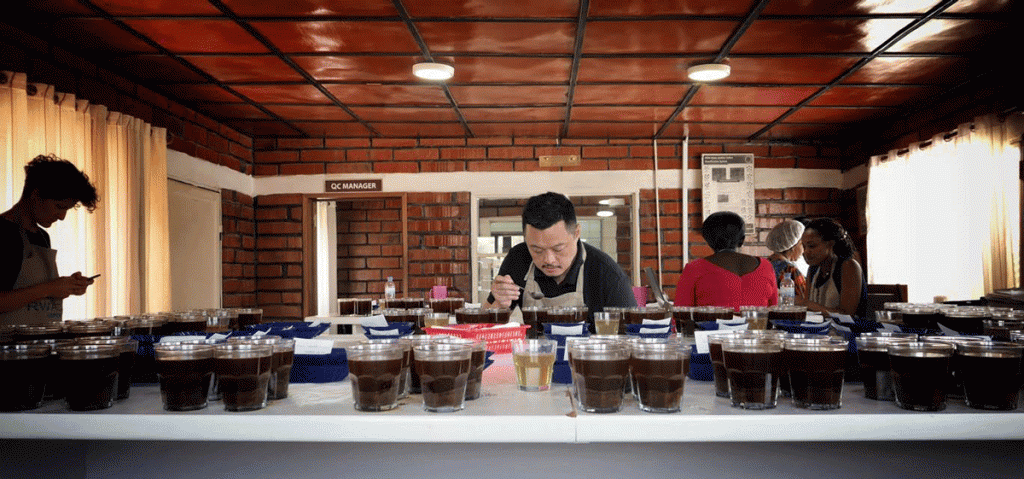
At the same time, with most cafes struggling to keep afloat, it’s obvious that coffee education and appreciation has been kept on the backburner all these years.
“Singaporeans have never been discerning,” replies Will when I ask if Singaporeans know the difference between good and bad coffee. “Maybe only 1% know what they’re doing, the other 99% don’t,”—a fact that is as much the fault of cafes as it is the consumer’s.
In fact, do you know why a flat white costs as much as it does?
It all starts with the green coffee. A crucial principle of third wave coffee lies in both paying coffee farmers fairly and being able to tell its story. From the altitude it’s grown at to the size of the harvest from a particular year, this is all information that enriches the experience of consuming specialty coffee.
Hence, not only do roasters pay up to 3 times more for specialty green coffee than commercial green coffee; many of them also make trips to Guatemala, Colombia, Ethiopia and Sumatra every year to connect with farmers. And these trips don’t come cheap.
There are also different skill levels involved for roasting specialty green coffee. “The process for commercial beans is simpler as compared to specialty coffee,” says Yi Yang. “For specialty coffee, the roasting process is tailored to each bean.”
To help ensure the consistency of each roast, Yi Yang employs the use of a specific piece of roasting software that he pays $200 a month for.
Unlike commercial coffee beans, specialty coffee isn’t burnt or sweetened with margarine and sugar like what you find in hawker centers. Rather, priority is placed on roasting them fresh and teasing out the various flavour profiles of each bean.
In comparison to wine, which has around a 200 aromatic and flavour compounds, coffee has over 1,500. From the fruity acidity of high-altitude African coffee to the chocolate nuttiness or even smoky, leathery character of lower altitude south American and Indonesian beans, these are all nuances that put a premium on specialty coffee.
And lastly, you’re paying for the barista’s hard work. “It takes more than a push of a button (which is what Starbucks does) to produce a cup of espresso. [It takes] actual skill,” says Adrian.
Paul (from Perk Coffee) also tells me that “the best cafes teach their baristas to froth the milk at 65 degrees exactly. And there’s no thermometer or anything, they have to go by [touch and habit].”
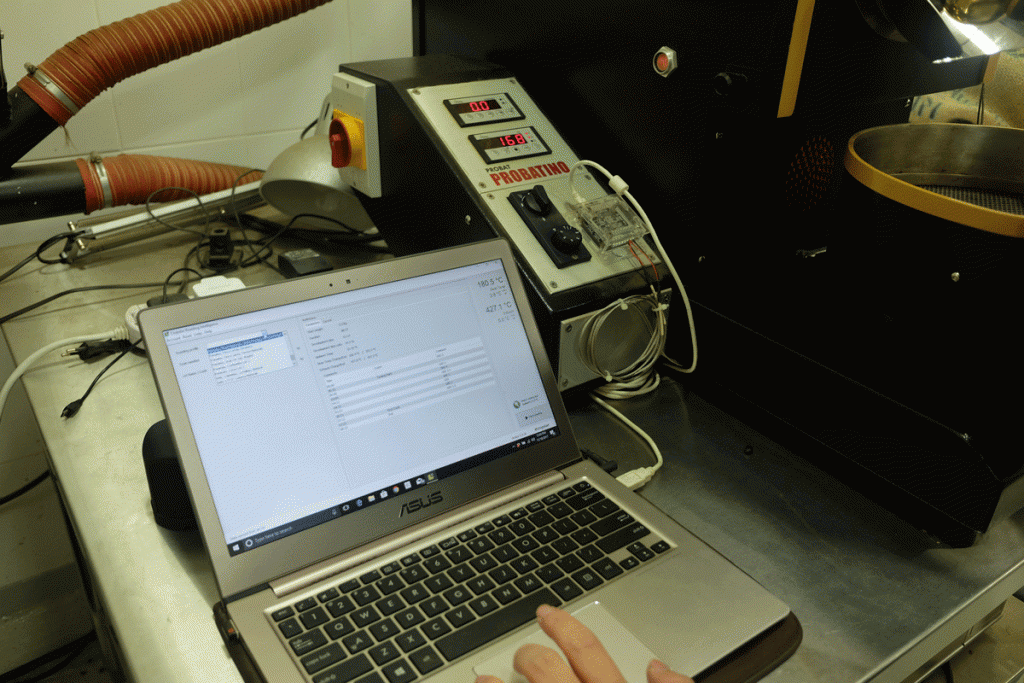
Save for some places like Chye Seng Huat, few cafes have been able to combine both education and business under one roof.
At present, Chye Seng Huat’s in-house roastery offers customers a peek into the roasting process. Moreover, their coffee bar allows customers a 360-degree view of the baristas at work, as well as an opportunity to speak with them and ask questions.
While this is an example that more cafes should seek to emulate, it’s not enough to expect them to do this on their own. Consumers need to show them the way.
“I have friends in the industry who are interested in delving deeper into coffee education and the perfection of the art,” says Paul. “Why? Because they’re starting to see a growing interest amongst the consumer. They’re observing instances of customers coming in and asking questions about the bean and the coffee.”
He acknowledges that while this is still a niche area and not necessarily appreciated by every cafe-goer, it’s definitely something worth having. After all, knowing your stuff is precisely what third wave coffee is all about.
Of course, moving towards a culture of greater coffee education and appreciation will come at a cost. “We’ll have to start charging more per cup,” says Paul, “If more time is spent on educating and chatting, we won’t be selling as many cups of coffee as we once did.”
That said, basic espresso making and latte art classes can go up to $300 per person, which is indicative of how coffee education could become a potential revenue generator.

So what’s next for Singapore’s coffee and cafe industry? What can we expect to see next year, in three years, or in 5 years time?
Will believes that if there’s any area in which cafes will undergo a revamp, it’ll be to do with enhancing the customer’s cafe experience.
He tells me of his desire to bring in an under-the-counter espresso machine to Alchemist, one that would free up his shop counter space and therefore allow the barista to interact more easily with the customers.
It’s a daring move considering that Singaporeans aren’t exactly the most open to interaction with service staff, though it’s refreshing that Will is seeking to change this. At the same time, he remains doubtful if the market is ready for this and would prefer if a bigger player could test the waters first.
On the other end of the spectrum, for those who just don’t get specialty coffee, rejoice, because it’s about to get a lot more mainstream.
Jewel Coffee, in an attempt to diversify its offerings and appeal to a mass market, is in the works to bring ice-blended drinks and bottled juices to its stores.
Perk Coffee, on top of its current offerings, plans on bringing in coffee add-ons such as matcha powder, cocoa powder and chai turmeric in addition to their online coffee beans.
Singapore’s coffee scene will likely set foot in foreign waters too.
Amongst Singapore’s more established roasters, and cafes, there has been talk about the need to expand overseas given the high cost of doing business in Singapore and the difficulties in depending solely on the relatively small local market for growth.

Today, cafes that know as much about coffee as they do about running a business continue to thrive and seem to be headed for a bigger slice of the pie. As for everyone else, the cafe industry will continue to offer the dream of being your own boss and escaping the 9-to-5 grind.
But while little has changed in Singapore, local players looking to do more (and better) would do well to heed the successes of coffee businesses overseas.
Over in San Francisco, Sudden Coffee has pioneered a new process of creating instant coffee from specialty coffee beans without compromising on flavour. So if you think Nespresso-style pods are convenient, this will blow your mind.
In Bath in the UK, Colonna Labs, which was born from the coffee shop Colonna and Smalls, has partnered with the University of Bath to conduct research on how coffee and brewing water can contribute to the science of sustainability.
So for anyone who wonders how much innovation one can really expect of a food product like specialty coffee, the answer is simple: a lot.
One needs only to stretch their imagination and look beyond the bottom line, something which admittedly remains a challenge for small business owners in Singapore. But with the cafe and coffee industry being as saturated as ever, perhaps taking the risk with something different might actually pay off in the long run.


